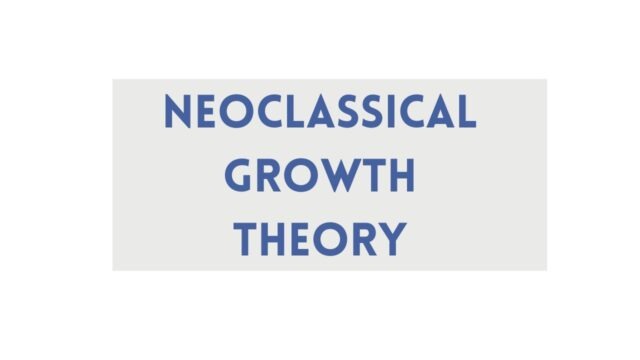
What is neoclassical growth theory
Neoclassical growth theory is a leading economic theory that focuses on the study of long-term economic growth. The theory is based on the work of economists like Robert Solow and Trevor Swan, and it is built upon the classical growth theory of thinkers like Thomas Malthus. neoclassical growth theory posits that economic growth is determined by the available technology and the level of investment in capital goods. The theory has been highly influential, and it continues to be an important tool for understanding long-term economic growth.
The key concepts of neoclassical growth theory
Neoclassical growth theory is a school of economic thought that argues that economic growth is primarily driven by increases in labor productivity. The theory is built on the work of early economists such as Adam Smith and David Ricardo, who argued that labor productivity is the main determinant of economic growth. Neoclassical economists argue that technological advances are the primary driver of productivity growth, and that this leads to increases in output and incomes. The theory has been very influential, and has helped to shape economic policies around the world. While it has come under criticism from other schools of thought, neoclassical growth theory remains a dominant force in economics.
How neoclassical growth theory explains economic growth
neoclassical growth theory is a school of thought that emphasizes the role of capital accumulation and technological progress in promoting economic growth. The theory was first developed in the late 1940s and early 1950s by economists such as Robert Solow and Trevor Swan. Since then, it has been used to explain a wide variety of observed patterns in economic growth. One of the key insights of neoclassical growth theory is that economies tend to grow at an exponential rate, due to the fact that they are constantly accumulating new capital and adopting new technologies.
This growth process is often compared to compound interest, whereby each unit of new capital or technology builds upon the previous ones, yielding ever-greater levels of output over time. While neoclassical growth theory has been influential in shaping our understanding of economic growth, it should be noted that it is not without its criticisms. For instance, some economists have argued that it downplays the role of other important factors, such as population growth, natural resource endowments, and institutions.
Nevertheless, the theory remains an important part of mainstream economics, and its insights continue to provide valuable insights into the causes and consequences of economic growth.
Criticisms of neoclassical growth theory
There are a number of criticisms that have been leveled at neoclassical growth theory over the years. One of the most common criticisms is that the theory fails to take into account the role of human capital in economic growth. Critics argue that human capital is essential for innovation and technological progress, and that neglecting this factor leads to unrealistic predictions about growth rates.
Another criticism of neoclassical growth theory is that it assumes perfect competition, which is rarely seen in real-world markets. This assumption can lead to incorrect predictions about the effects of government policies and other market distortions. Finally, some economists have critiqued the theory for its reliance on aggregated data, which can obscure important details about how economies actually operate. Despite these criticisms, neoclassical growth theory remains a powerful tool for understanding and predicting economic growth.
The future of neoclassical growth theory
neoclassical growth theory is the most widely accepted framework for understanding economic growth. The cornerstone of this theory is the view that economic growth is driven by increases in productivity. Productivity, in turn, is determined by factors such as technology, investment, and education. While neoclassical growth theory has been successful in explaining past economic growth, it faces several challenges going forward.
One challenge is that productivity growth has been slowing in recent years, which makes it difficult to explain why economies are growing at the same rates as they did in the past. Another challenge is that many developing countries have not experienced the same levels of economic growth as developed countries, despite having similar levels of productivity. As a result, there is a need for new theories of economic growth that can better explain the complex factors that drive productivity and economic growth.


































